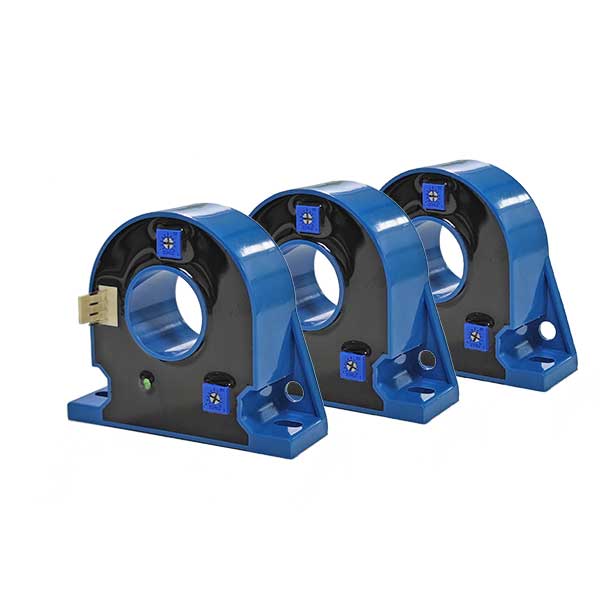
Spis treści
In the realm of electrical engineering, understanding the flow of current is paramount. Whether it’s for monitoring power consumption, protecting circuits, or controlling machinery, accurate measurement of current is crucial.
This is where a przetwornik prądu comes into play, serving as an indispensable tool for converting electrical currents into measurable signals. For beginners in the field, delving into the world of electrical transducers can seem daunting. However, with a basic understanding of their principles and applications, one can navigate this terrain with confidence.
What are Current Transducers?
At its core, a current transducer is a device that converts an electrical current into a proportional output signal. This output signal can be in the form of voltage, current, or frequency, depending on the transducer’s design. By utilizing various sensing techniques, current transducers provide accurate measurements of current without the need to interrupt the circuit being monitored.
Rodzaje przetworników prądu
Current transducers come in several types, each tailored to specific applications and operating principles:
Przetworniki z efektem Halla
These transducers operate based on the Hall Effect, where a magnetic field perpendicular to the direction of current flow induces a voltage perpendicular to both the current and the magnetic field. This voltage, known as the Hall voltage, is proportional to the current being measured.
Przetworniki cewkowe Rogowskiego
Rogowski coils are flexible air-core coils that encircle the conductor carrying the current to be measured. When the current changes, it induces a voltage in the coil, which is then integrated to obtain a signal proportional to the current.
Przekładniki prądowe (CT)
CTs are perhaps the most common type of current transducers. They consist of a primary winding through which the current to be measured flows and a secondary winding connected to the measuring instrument. The ratio of turns between the primary and secondary windings determines the output current.
Przetworniki rezystancyjne bocznikowe
Shunt resistors are placed in series with the load or circuit being measured. The voltage drop across the resistor is proportional to the current flowing through it, allowing for current measurement.
These sensors are reliable and sensitive, and can measure a few milliamperes of direct current. They are often used for battery monitors.
Hangzhi HIT Series Current Sensor – Low Cost As Hall Effect Current Sensor, but a lot better performance. Comparing to the 1% accuracy of hall effect current sensor, HIT current sensors have the following advantages:0.05% accuracy, 50ppm linearity, Less than ±10uA Zero Offset.
The non-intrusive installation of a split-core fluxgate current transducer is one of its key advantages. There is no need to disrupt the circuit by simply clamping the device around the conductor, making it a feasible alternative for monitoring existing systems without generating downtime.
Hangzhi CIT series split core current transducers based on the technologii fluxgate with 0.05% accuracy. These sensors can realize the isolated measurement of DC current and AC current.
Applications of Current Transducers
Current transducers find applications across various industries and fields, including:
Power Monitoring
In electrical systems, monitoring current is crucial for maintaining system stability, preventing overload, and optimizing energy usage. Current transducers play a vital role in monitoring power consumption and ensuring efficient operation.
Motor Control
In industrial settings, precise control of motors is essential for optimizing performance and ensuring safety. Current transducers provide real-time feedback on motor currents, allowing for precise control and protection against overcurrent conditions.
Fault Detection and Protection
Current transducers are integral components of protective relays used to detect faults such as short circuits and overloads. By monitoring current levels, these devices can trigger protective measures to isolate faulty sections of a system and prevent damage.
Energy Management
In renewable energy systems and smart grid applications, current transducers facilitate the monitoring and management of energy flow. By accurately measuring currents in solar panels, wind turbines, and battery systems, these devices help optimize energy production and distribution.
Considerations When Choosing a Current Transducer
When selecting a current transducer for a specific application, several factors must be considered:
Understand Your Application Requirements
Przed wyborem przetwornika należy wiedzieć, do czego jest on potrzebny, np. rodzaj prądu (AC lub DC), zakres mierzonych wartości prądu i wymagana dokładność.
Consider Right Measurement Range
Czujniki prądu mają określony zakres prądu i mogą mierzyć z wysoką precyzją; zakres ten nazywany jest zakresem pomiarowym. Wybór czujników z odpowiednim zakresem pomiarowym ma kluczowe znaczenie. Jeśli zakres jest zbyt wysoki, istnieje ryzyko przeciążenia czujnika, a jeśli zakres jest zbyt niski, nie można zmierzyć całego zakresu prądu. Kluczowa jest również rozdzielczość czujnika lub minimalna zmiana prądu, którą może wykryć.
Care About the Sensor’s Accuracy and Linearity
Dokładność i liniowość są równie ważnymi parametrami przetwornika. Dokładność oznacza, jak ściśle odczyty odpowiadają rzeczywistym wartościom, natomiast liniowość czujnika oznacza jego zdolność do zachowania stałej czułości w całym zakresie pomiarowym. Aby zagwarantować precyzyjne i wiarygodne odczyty, należy użyć czujnika o dobrej dokładności i liniowości.
High-precision transducers should have low error rates and provide consistent, reliable readings. Hangzhi IIT industrial current sensor products have high accuracy, linearity & stability, and low temperature drift and zero drift features, and are providing services to our customers with the top performance and effective cost.
Consider Response Time
Czas reakcji odnosi się do czasu wymaganego przez czujnik do zarejestrowania zmian prądu i wygenerowania odpowiednich sygnałów wyjściowych. Wybór czujnika o krótkim czasie reakcji gwarantuje precyzyjne i terminowe odczyty. Jeśli czas reakcji jest zbyt długi, czujnik lub obwód może ulec uszkodzeniu w sytuacjach, w których prąd stale się zmienia.
Evaluate Output Signal Type
Check the type of signal that the current transducer sends out. Typical output types include digital signals and analog signals (current or voltage). Verify that the transducer’s output signal is compatible with your control system or data acquisition device.
Warunki Środowiskowe, Montaż i Instalacja
Należy wziąć pod uwagę środowisko pracy, w tym zakres temperatur, wilgotność i potencjalne narażenie na chemikalia lub wibracje, i wybrać przetwornik, który może wytrzymać te warunki.
Upewnij się, że wymagania dotyczące mocowania i instalacji przetwornika są zgodne z możliwościami i ograniczeniami systemu. Izolacja jest również jednym z czynników przy wyborze czujników. Upewnij się, że przetwornik zapewnia odpowiednią izolację elektryczną dla bezpieczeństwa i zapobiegania zakłóceniom sygnału.
Check Compatibility with Existing Systems
Sprawdź kompatybilność obecnego przetwornika z istniejącymi systemami. Upewnij się, że fizyczny rozmiar przetwornika, opcje montażu i połączenia elektryczne idealnie pasują do Twojej konfiguracji.
Kompatybilność zmniejsza potrzebę dodatkowych modyfikacji i zapewnia płynną integrację. Należy sprawdzić, czy przetwornik spełnia normy i specyfikacje wymagane dla danego systemu.
Compliance, Standards and Cost
Check that the transducer meets any relevant industry standards and regulations for your application. Consider the cost of the transducer in relation to your budget and the value it provides in terms of performance and reliability.
Check Manufacturer Reputation
Przed zakupem przetwornika prądu należy dowiedzieć się, jak znana jest firma, która go wyprodukowała. Przeczytaj recenzje i poproś o rekomendacje profesjonalistów z branży. Wybierz przetwornik od renomowanego producenta z dobrą obsługą klienta i wiarygodną historią.
Wniosek
Understanding the principles and applications of przetworniki prądu is essential for engineers and technicians working in fields where electrical current measurement is paramount. With the information provided in this guide, beginners can embark on their journey into the world of current transducers with confidence, knowing the fundamental concepts and considerations involved.
